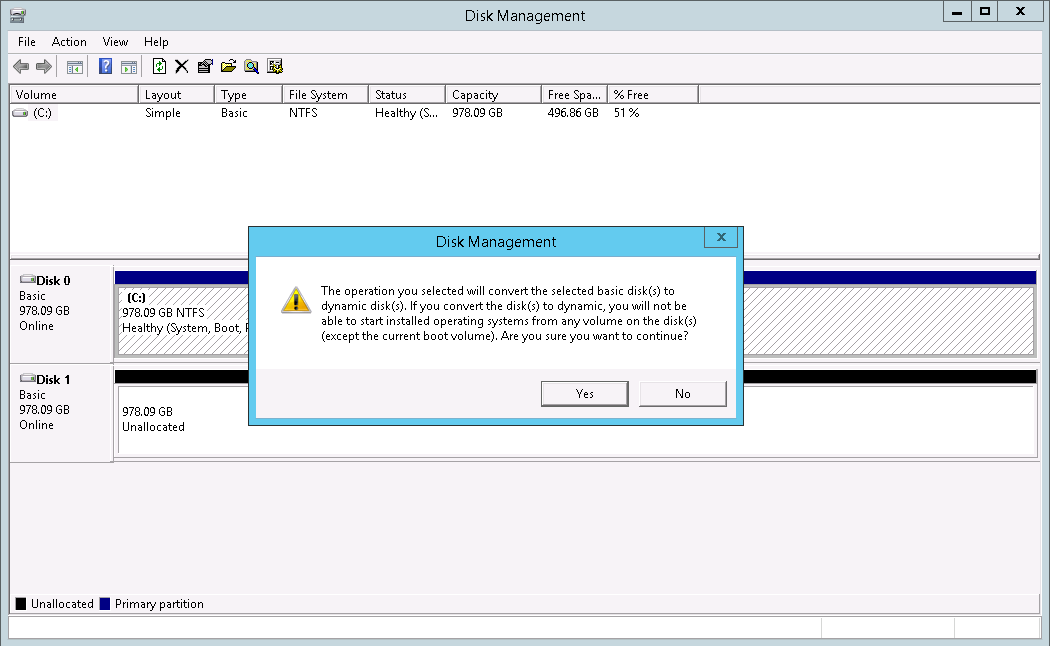

I hope you don’t mind me chipping in here, but I think in this case you have something of real value to add but you have not done so because, in your own words, you “can’t be bothered”. Jabuzz, before posting this reply I went back and read a few of your comments and I find most of them to be very well informed, constructive and to add real value to the thread in which you make them. ”If you don’t understand why they are better I can’t be bothered explaining because meh you don’t understand storage in the slightest.” So keep going with your off-premises backups, no matter how good your RAID setup. but they haven’t yet invented a single-unit RAID that you can build at home that will survive a house fire. In other words, if you’re going RAID5, by one drive more than you need.
#Unraid setup mirror raid full
Make notes / take screen shots.Īnd it’s hopefully obvious, but when you do buy your drives, by enough for *at least* one full round of drive swaps. but either way find out about drive swapping and, before you put any data on your RAID, try a drive swap. Easy to do if you have a hot-swap capability.
#Unraid setup mirror raid how to
But for that preservation to happen, you’re going to need to know how to recover your RAID in the event of an error. Initially setting up a RAID can take a fair old bit of time, which means that my last suggestion might well be unpalatable to you: the reason you are investing in a RAID setup is because you have data that you don’t want to lose in the event of a head failure. I’m honestly not sure how this will work between ‘hardware’ and ‘software’ RAID, but at least some of these options, coupled with the right hardware will allow you to have a ‘hot swap’ capability. When you come to cable up your setup, do take the time to carefully read the technical specification of your RAID controller. To get a decent level of redundancy you should possibly set your sights on a RAID-5 configuration with 4 drives as a starting point, but if you can stretch a bit further, RAID 6 will give you enough resiliency to allow for the simultaneous loss of 3 volumes. Who knows what sort of treatment they have had to survive in your journey to you. Not because you should expect defects in modern drives but because every now and then you’ll get an idiot packing shipments and receive a consignment of drives in a loose box without packing. I’m running RAID6 and can comfortably stream 4K content from that setup, but you might want to get a bit more advice or read up on performance if this is important to you.ĭon’t order all your drives in the same order or from the same supplier.
#Unraid setup mirror raid pro
I can’t speak to any make other than Western Digital (which I’ve found to be excellent) but their range of “Red” NAS drives come in a regular variant and a Pro variant. at which point you’re going to wish you’d bought the best drives you could find.

Right up to the point where you experience your first drive loss. The reason I make this recommendation is simply that because, if your NAS delivers on its promise, it will soon fade to invisibility on your home network and you’ll forget it is there. Do not be tempted to forego proper NAS drives, even if it means that you scale down your capacity requirements to start with. You will quickly find that they are more expensive (often quite a bit more expensive) than ‘desktop’ drives of similar capacity. If you’re planning on setting up a dedicated server for home use (then apart from noting that after a few days you’ll wonder how you ever managed without it) I would strongly recommend that you give particular attention to your choice of drives.Īll of the well-known manufacturers offer drives particularly designed for NAS use. In your post you note that this is going to be a RAID for home use - domestic purposes - but you don’t really say if you’re planning on running this as a dedicated NAS or whether you just want to have extra security with data being archived in your running machine.


 0 kommentar(er)
0 kommentar(er)
